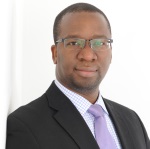A few months ago, I discovered that my excessive fatigue and uneasy sleep were caused by an underlying condition of severe sleep apnea. This malady causes one to stop breathing while sleeping. Humans of course, need to breathe, so the end result is that sufferers keep waking up every 5 minutes or so to restart the breathing process, all the while remaining blissfully unaware of multiple interruptions to their sleep. That is, until the fatigue begins upon waking. In my case, the recommended treatment was a CPAP (Continuous Positive Airways Pressure) machine. The CPAP machine, which is basically a refined air blower with a mask attached, has made a tremendous difference to my quality of life. Provided I use it as directed, I am actually able to get some sleep while sleeping.
My first appointment to see the sleep physician after six months of using the machine is when I discovered that my new medical device had been spying on me from the day I brought it home. Upon taking the machine in with me (as requested by my doctor’s office), I discovered to my immense shock that my machine was fitted with a small removable data card which the attendant readily removed and relieved of accumulated data shortly before I began my meeting with the doctor. During our conversation, I was asked how many hours of sleep I was getting. I claimed six, but was chidingly informed that my average over the past 30 days was just a little over five hours, and I would need to increase this number to fully enjoy the benefits of my prescribed treatment. This was how I learned that my CPAP was actively collecting data on my sleeping habits, uploading it to an SD card, and showing up my unreliable witnessing as a patient.
While one could discuss the disciplining effects of being aware of the CPAP’s surveillance, what is of perhaps more interest is the sheer casualness of the episode. At no time during my interaction with the medical staff in the process of picking up the CPAP machine did anyone inform me that the machine would be collecting data on my sleeping hours. In fact, I still don’t know what kind of data the machine collects. Is it just sleeping hours, or also GPS co-ordinates? Is there a microphone to measure my breathing? Does the machine have to be active to collect data, or is the data collection continuous? Is this data actionable in a court of law? For example, in case of a motor or similar accident, could an insurance company sue to gain access to the data and use it in an attempt to establish guilt through sleepiness? When does the data on the CPAP machine become a “medical record”, once the machine gathers it, or when it is downloaded in the doctor’s office? A lot of these questions are hypothetical, but they do illustrate possible problems raised by this kind of data collection. However, as interesting as these questions are, the fact that this kind of surveillance was seen as unproblematic even in a field as sensitive to informed consent as medicine, is cause for reflection. As the patient, who had to take this device into my home, I was never asked for my consent, neither was I informed of the data recording capabilities of the CPAP machine.
It isn’t just CPAP machines that collect data without letting people around them know that they are doing so. As reported in the Boston Globe, the black box in Lt. Gov. Tim Murray’s state issued 2007 Ford Crown Victoria collected data that revealed he was traveling at 100mph just before his crash, and that his control of the car was consistent with falling asleep while at the wheel. The good governor walked away unscathed, but the surveillance and subsequent testimony of the car’s black box has led to pointed questions about why the governor was only ticketed for speeding. Government issued cars are not the only ones with black boxes, most relatively modern cars have them. They are busy ticking away recording the driver’s activity, yet at no point during the sales pitch does the car salesman mention this fact. It is buried in the fine print of the owner’s manual, and that only at the behest of a 2006 NHTSA order. It seems almost every day, a story breaks that shows how mundane and useful devices are engaged in surveilling their users: mobile phones that collect GPS location data, Facebook’s questionable uses of highly private data, and camera equipped televisions providing a means of directly observing people in their homes. Perhaps it isn’t paranoid to conclude that everyday objects have taken on a Jekyll & Hyde quality, where they are simultaneously useful and treacherous to their users.
Langdon Winner’s notion of technological somnambulism as a willingness to sleepwalk through the process of reconstituting the conditions of human existence is particularly useful in thinking through public reactions to the phenomenon of habitual technological snooping. It is instructive to observe how ordinary and non-contentious this increased surveillance has become. This is exemplified in the notion that the “Facebook generation” merely has a different definition of privacy. Welcome to the new normal where broad based surveillance is merely how we live! Perhaps we all need to switch off the devices that help us sleep, and wake up. I know that at my next doctor’s visit, I am going to request a full accounting of what exactly it is my CPAP machine records.
Keywords: technological somnambulism, surveillance society, electronic data records
Tolu Odumosu is a Research Fellow in the Science, Technology and Public Policy Program and the STS Program at Harvard
Suggested Further Reading:
- Winner, Langdon. 1986. The Whale and the Reactor: A search for limits in an age of high technology. Chicago: University of Chicago Press.






